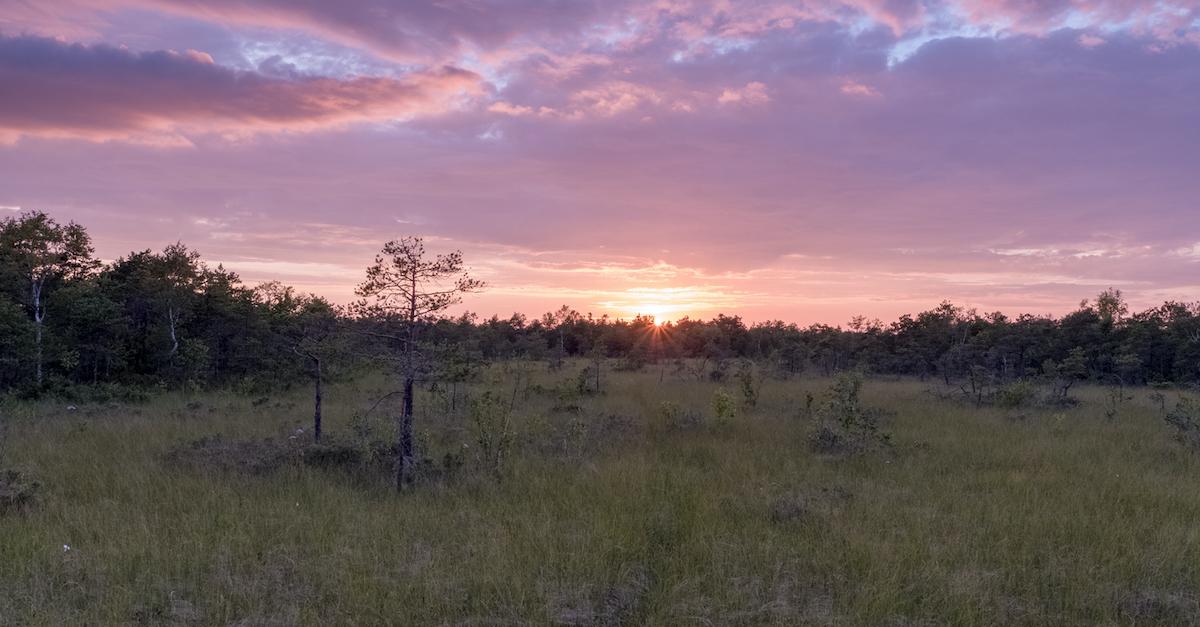Sept. 22 Is the Official Autumnal Equinox — Here's What That Actually Means
Updated Sept. 22 2020, 1:56 p.m. ET

Over the last few weeks, you've most likely noticed the days getting progressively shorter, a delicious crisp taste in the air, the presence of pumpkin spice lattes at your favorite coffee shops, and a bit of gorgeous, orange-y foliage emerging from the trees. The shift from summer to fall officially happens on the autumnal equinox, which falls on Sept. 22 this year, and it's warmly welcomed by many of us who are completely done with months of scorching hot weather.
What actually happens on the autumnal equinox? Aside from the leaves starting to change, cooler weather, and the availability of seasonal drinks, the science behind the annual seasonal shift is actually incredibly fascinating.

Unlike summer and winter solstice, which mark the longest and shortest days, the equinoxes are equal hours of day and night.
Every year, according to Britannica, there are two equinoxes: one in autumn, and one in spring. During the autumnal equinox in the Northern Hemisphere, the sun moves precisely above the equator, and sun's path and the celestial equator align while the sun heads South. When this happens, the length of night and day are exactly the same, unlike the solstices, which mark the longest day of the year (in the summer) and the shortest day of the year (in the winter).
The autumnal equinox officially marks the first day of fall, and it generally takes place around Sept. 21 or Sept. 22, lasting until the winter solstice arrives on Dec. 21 or Dec. 22. In the Southern Hemisphere, the vernal and autumnal equinoxes are switched, as the autumnal equinox takes place on March 20 or 21 in the Southern Hemisphere, which is during the Northern Hemisphere's vernal equinox... hence why the seasons are switched in the Land Down Under.

The autumnal equinox is a spiritual time for many, so here's how to celebrate.
Seasonal shifts — especially the autumnal equinox — is an incredibly spiritual time of year for nature enthusiasts, especially for those who follow paganism. Either way, celebrating the annual phenomenon is a fun way to connect with Mother Earth, and while throwing an autumnal feast isn't necessarily an option during the ongoing pandemic, Vice recommends spending time in nature, as connecting with Gaia, the goddess of Earth and nature, is absolutely vital.
If you'd like to take things a step further, you can try casting a protective circle and creating an altar outside, including offerings of apples and bread for faeries and other spiritual entities, or, you can try cleansing yourself by burning herbs such as sage or cedar for good energy. However, spending time outside with your quaran-team is just fine, too. As long as you're enjoying nature and everything Mother Earth has to offer, you're doing the equinox just right.

Fall equinox is an exciting time, scientifically and spiritually. Get ready for the highly-anticipated seasonal shift, and break out that eco-friendly fall jacket. (If you couldn't tell, we're psyched beyond belief!)